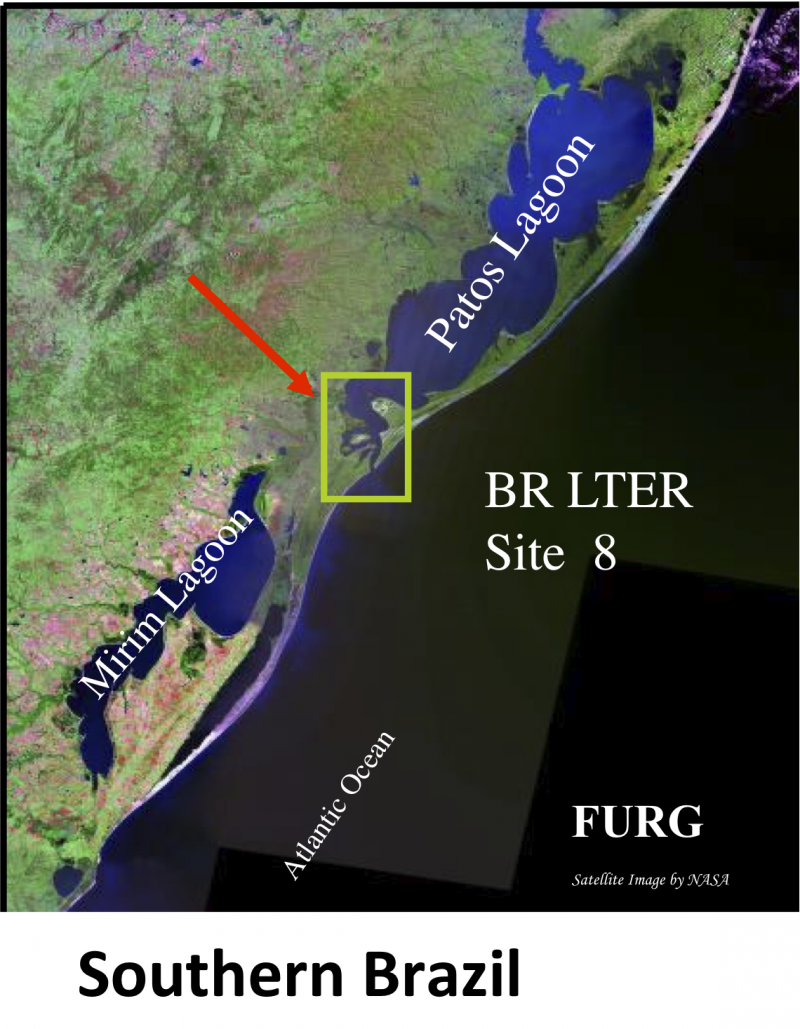Patos Lagoon Estuary and Adjacent Coast - Brazil
Basic Information
Site Name
Patos Lagoon Estuary and Adjacent Coast
Short name
PLEA
Country
Brazil
Web Address
Operating Organisation
Site Manager
Site Description
Last modified
2020-06-29 10:06:52
General Characteristics and Status
Site Status
Operational
Year Established
1978
Observed properties
Affiliation and Network Specific Information
Affiliation
ILTER✔This site is a verified "ILTER" member.
LTER Brazil✔ (LTER_SAM_BR_08)This site is a verified "LTER Brazil" member.
Photos
Geographic
Centroid/Representative Coordinates
Latitude: -32 Longitude: -52.072552
Size
ca. 200000.00ha
Elevation (average)
0.00msl
Elevation (min)
-20.00msl
Elevation (max)
3.00msl
Download

